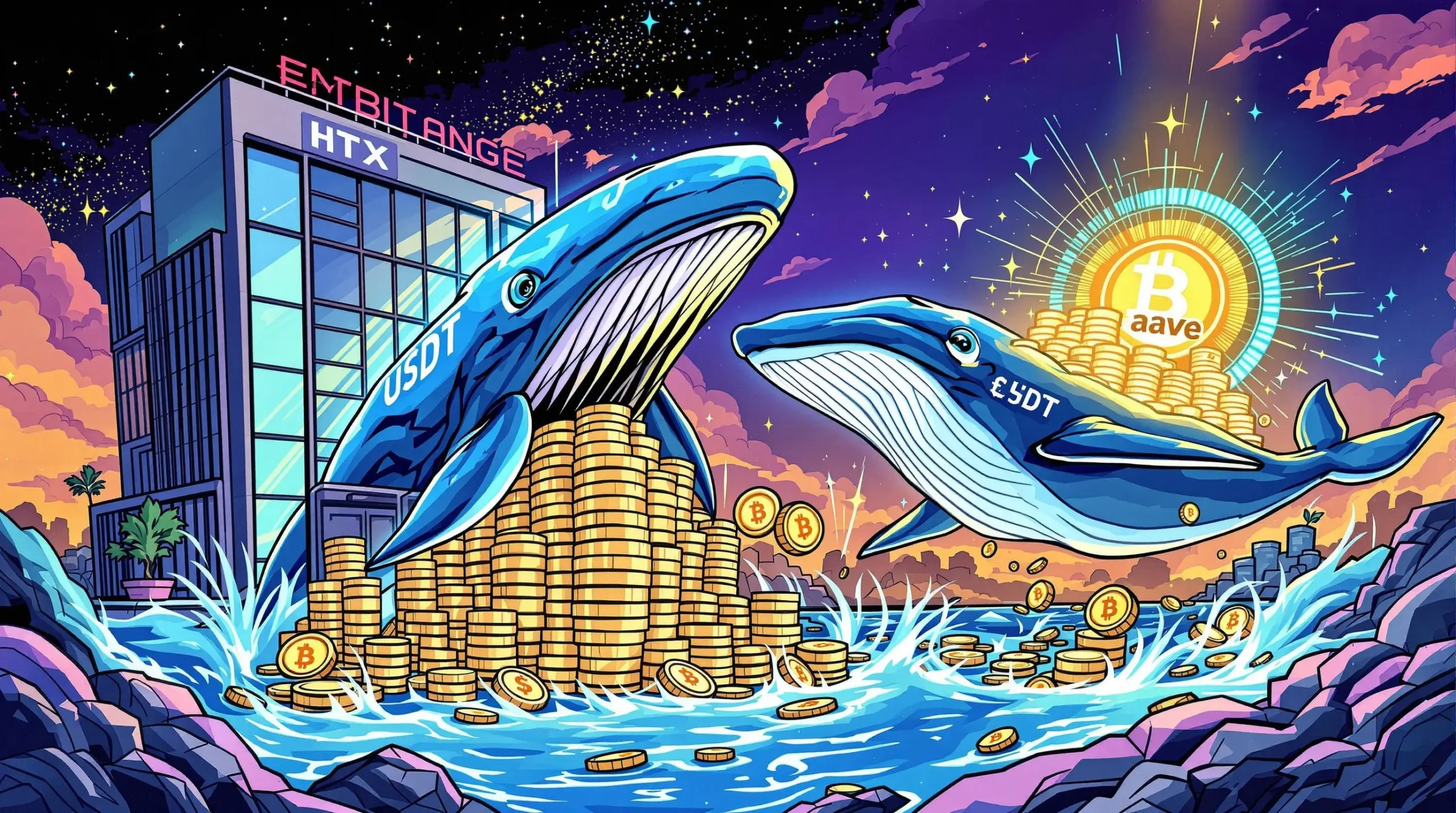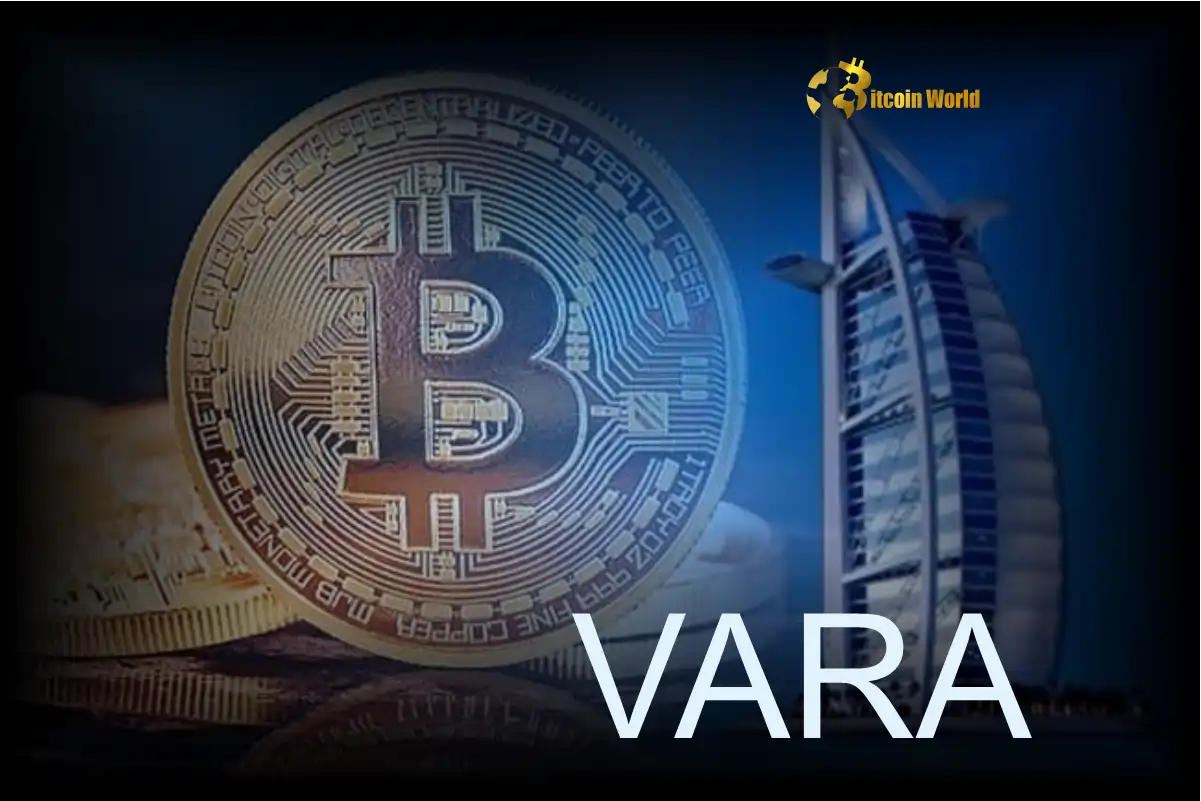BitcoinWorld

Massive USDT Transfer Signals Critical Shifts in Crypto Finance
In the ever-evolving world of cryptocurrency, large on-chain movements often signal significant shifts, potential strategies, or even underlying market dynamics. Recently, the crypto community was abuzz with news of an extraordinary USDT transfer: a staggering 410,000,000 USDT, valued at approximately $410 million, moving from the HTX exchange to the Aave protocol. This colossal transaction, reported by Whale Alert, immediately captured attention, prompting questions about its implications for both centralized exchanges and the burgeoning decentralized finance (DeFi) ecosystem.
Unpacking the USDT Transfer: What Just Happened?
When such a substantial amount of Tether (USDT), the world’s largest stablecoin by market capitalization, changes hands on the blockchain, it’s rarely a random occurrence. This particular USDT transfer involves two major players in the crypto space: HTX (formerly Huobi), a prominent centralized cryptocurrency exchange, and Aave, a leading decentralized lending and borrowing protocol. The sheer volume of $410 million in stablecoins moving from a CEX to a DeFi platform suggests a deliberate and strategic maneuver by a significant market participant, often referred to as a ‘whale’.
Let’s break down the core elements of this transaction:
- USDT (Tether): A stablecoin pegged to the US dollar, meaning its value is intended to remain stable at $1.00. It’s widely used for trading, liquidity provision, and as a safe haven asset within the volatile crypto markets.
- HTX (formerly Huobi): A centralized cryptocurrency exchange offering a wide range of trading services. Transfers from CEXs often indicate a user moving funds off the exchange for various reasons, including self-custody, engagement with DeFi, or preparation for specific investment strategies.
- Aave: A decentralized lending and borrowing protocol built on various blockchains (primarily Ethereum). Users can deposit cryptocurrencies to earn interest or borrow cryptocurrencies by providing collateral. Aave is a cornerstone of the decentralized finance ecosystem.
This movement isn’t just about the dollar value; it’s about the flow of capital and the choices being made by those with substantial influence in the market. Understanding the ‘why’ behind such a move is crucial for deciphering broader market sentiment.
The Role of HTX Exchange in Large-Scale Transactions
HTX, as one of the oldest and largest centralized cryptocurrency exchanges globally, plays a pivotal role in the crypto economy. It acts as a primary gateway for many users to buy, sell, and trade digital assets. For a crypto whale to hold 410 million USDT on HTX indicates a high level of trust in the exchange’s security and liquidity, at least up until the point of transfer. The decision to move such a vast sum from HTX to Aave can be interpreted in several ways:
- Reduced Centralized Risk: Moving funds off an exchange can be a move towards self-custody, mitigating counterparty risk associated with centralized entities.
- Strategic Redeployment: The funds might be intended for specific DeFi activities that are not available or as efficient on a centralized exchange.
- Yield Opportunities: DeFi protocols like Aave often offer attractive yield opportunities that might surpass those available on CEXs for stablecoins.
While HTX remains a critical hub for crypto trading, this USDT transfer highlights a growing trend where large capital holders are increasingly leveraging the unique advantages offered by decentralized platforms. It’s a testament to the evolving landscape where traditional exchange functions are being complemented, and sometimes challenged, by innovative DeFi solutions.
Why Aave Protocol? Understanding DeFi’s Appeal
The destination of this massive USDT transfer – Aave – is equally significant. Aave is a non-custodial liquidity protocol where users can participate as depositors or borrowers. Depositors provide liquidity to the market to earn a passive income, while borrowers can obtain loans by providing collateral. For a whale with 410 million USDT, Aave offers several compelling advantages:
| Feature | Benefit for Whale | Implication |
|---|---|---|
| Yield Generation | Deposit USDT to earn interest, often higher than traditional finance or some CEXs. | Passive income on a large stablecoin holding. |
| Borrowing Opportunities | Use USDT as collateral to borrow other assets without selling their stablecoin holdings. | Leverage strategies, shorting, or funding other investments. |
| Decentralization & Transparency | Transactions are on-chain, auditable, and not reliant on a single entity. | Reduced counterparty risk and increased trust through smart contracts. |
| Flash Loans | Unique uncollateralized loans that must be repaid within the same transaction block. | Advanced arbitrage or liquidation strategies. |
The move to Aave protocol underscores the increasing sophistication of large crypto investors who are not just looking to trade, but to actively deploy their capital to generate yield, manage risk, and participate in complex financial strategies within the decentralized finance ecosystem. It signifies a strategic pivot towards leveraging the composability and open nature of DeFi.
Decoding the Moves of a Crypto Whale
Who is behind such a colossal USDT transfer? While the exact identity of the ‘crypto whale’ remains anonymous, their actions speak volumes. A whale is an individual or entity holding a significant amount of cryptocurrency, enough to potentially influence market prices. Their movements are closely watched by analysts and retail investors alike, as they can sometimes precede major market shifts or indicate new trends.
Possible motivations for this particular crypto whale‘s move include:
- Yield Farming: Depositing USDT into Aave to earn interest, and potentially using the deposited assets as collateral to borrow other assets for further yield generation in other DeFi protocols.
- Liquidity Provision: Providing a substantial amount of liquidity to Aave’s lending pools, earning fees from borrowers.
- Collateral for Borrowing: Using the USDT as collateral to borrow other cryptocurrencies like Ethereum or Bitcoin, perhaps to participate in staking, provide liquidity elsewhere, or even to take a leveraged long position on another asset without selling their stablecoin holdings.
- Arbitrage Opportunities: Preparing for potential arbitrage opportunities between different platforms or assets, leveraging Aave’s liquidity.
- Institutional Involvement: It could be an institution or a large fund strategically allocating capital into DeFi for diversification or specific investment mandates.
Tracking crypto whale movements, while not a guaranteed predictor of market outcomes, offers valuable insights into where smart money might be flowing and what strategies are being employed by the market’s most influential participants. This USDT transfer is a prime example of such a strategic play.
The Broader Impact on Decentralized Finance
This 410 million USDT transfer to Aave is more than just a single transaction; it’s a powerful signal for the entire decentralized finance landscape. It demonstrates the growing confidence and increasing institutional-grade capital flowing into DeFi protocols. Here’s why this is significant:
- Validation of DeFi: Such a large influx of capital validates the robustness, security, and yield-generating capabilities of established DeFi protocols like Aave. It shows that DeFi is maturing beyond niche retail participation.
- Increased Liquidity: A substantial deposit like this significantly boosts Aave’s liquidity pools, making it more attractive for other users to borrow and lend, potentially leading to better interest rates and higher capital efficiency across the protocol.
- Market Confidence: When major players move significant capital into DeFi, it instills greater confidence in the broader market, potentially encouraging other large investors to explore similar opportunities.
- Evolving Financial Landscape: It underscores the ongoing shift where traditional financial paradigms are being challenged and complemented by decentralized alternatives. DeFi is no longer just an experimental corner of crypto; it’s becoming a serious contender for capital allocation.
The continuous flow of capital from centralized exchanges to decentralized finance protocols is a clear indicator of the sector’s growth and its increasing integration into the mainstream crypto economy. This particular USDT transfer serves as a vivid example of this powerful trend.
Conclusion: A Glimpse into Crypto’s Future
The 410 million USDT transfer from HTX to Aave is a compelling narrative in the ongoing saga of cryptocurrency’s evolution. It highlights the strategic decision-making of a powerful crypto whale, the robust infrastructure of the HTX exchange, and the magnetic appeal of the Aave protocol within the burgeoning decentralized finance ecosystem. Such a significant movement of capital underscores the increasing sophistication of crypto investments and the growing trust in DeFi as a viable and lucrative alternative for yield generation and capital deployment.
This event serves as a powerful reminder that the crypto market is dynamic, with large capital flows constantly reshaping its contours. As more whales and institutions explore the benefits of decentralized platforms, we can expect to see further innovation and growth within DeFi, solidifying its role as a critical component of the global financial landscape. The future of finance is undoubtedly a blend of centralized efficiency and decentralized innovation, and transactions like this offer a fascinating glimpse into that evolving reality.
To learn more about the latest crypto market trends, explore our article on key developments shaping decentralized finance’s future trajectory.
Frequently Asked Questions (FAQs)
What is USDT (Tether) and why is it used for large transfers?
USDT, or Tether, is a stablecoin designed to maintain a value equivalent to the US dollar. It’s widely used for large transfers because it offers stability amidst volatile crypto markets, facilitating quick and efficient movement of value without exposure to price fluctuations of other cryptocurrencies. It acts as a digital dollar for trading, lending, and liquidity provision.
What is HTX and its role in the crypto ecosystem?
HTX (formerly Huobi) is a global centralized cryptocurrency exchange. Its role is to provide a platform for users to buy, sell, and trade various cryptocurrencies. It acts as a gateway for many entering the crypto market, offering liquidity, security, and a range of financial services, including spot trading, futures, and derivatives.
What is Aave Protocol and how does it function in DeFi?
Aave Protocol is a leading decentralized lending and borrowing platform within the decentralized finance (DeFi) ecosystem. It allows users to deposit cryptocurrencies into liquidity pools to earn interest or to borrow cryptocurrencies by providing collateral. All transactions are governed by smart contracts on the blockchain, ensuring transparency and eliminating the need for intermediaries.
Why would a crypto whale move such a large amount of USDT from an exchange to a DeFi protocol?
A crypto whale might move a large amount of USDT from an exchange to a DeFi protocol like Aave for several strategic reasons. These include seeking higher yield opportunities through lending, using the USDT as collateral to borrow other assets for leveraged strategies, participating in liquidity provision, or reducing counterparty risk associated with holding large funds on a centralized exchange.
Does this USDT transfer signal a bullish or bearish trend for the market?
A large USDT transfer from a centralized exchange to a DeFi lending protocol is generally considered a neutral to slightly bullish signal. It indicates that a whale is looking to deploy capital within the crypto ecosystem, rather than cashing out. By depositing USDT into Aave, they are likely seeking to generate yield or leverage existing assets, which suggests continued engagement and confidence in the market’s underlying utility and opportunities, particularly within DeFi.
How can I track crypto whale movements?
You can track crypto whale movements using blockchain explorers like Etherscan (for Ethereum-based tokens like USDT on Ethereum) or Tronscan (for USDT on Tron). Services like Whale Alert specifically monitor and report large transactions across various blockchains and exchanges. Following reputable crypto news outlets and on-chain analytics platforms can also provide insights into significant whale activity.
Share the Insight!
Was this deep dive into the massive USDT transfer enlightening? Share this article with your friends, fellow crypto enthusiasts, and anyone curious about the inner workings of the crypto market and the powerful forces shaping decentralized finance! Your shares help us bring more valuable insights to the community.
This post Massive USDT Transfer Signals Critical Shifts in Crypto Finance first appeared on BitcoinWorld and is written by Editorial Team





